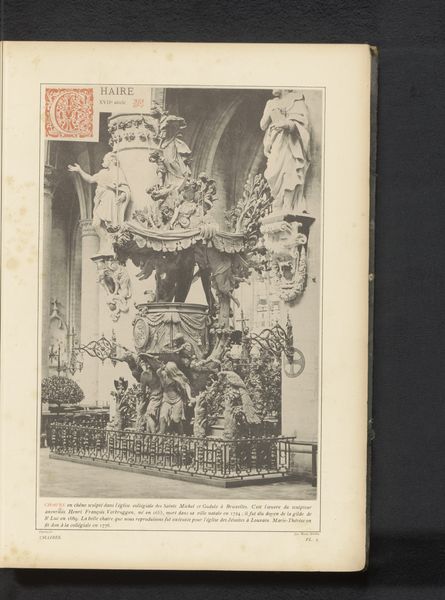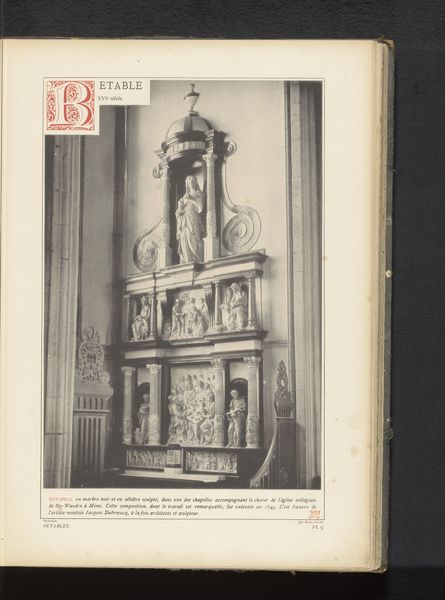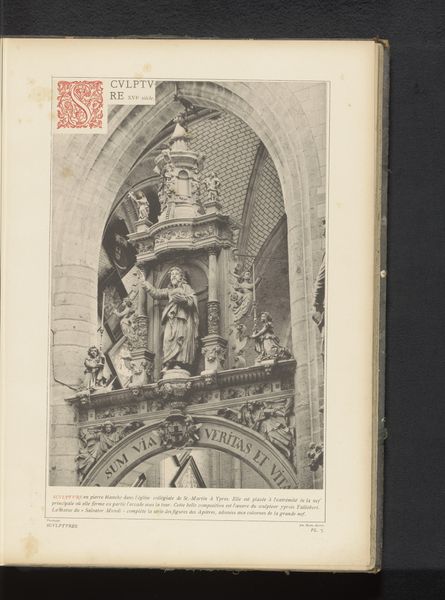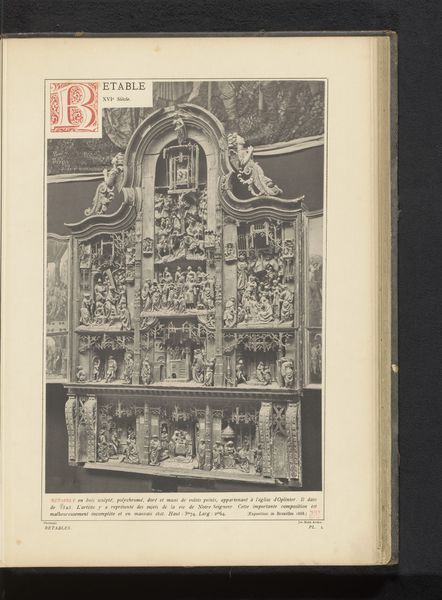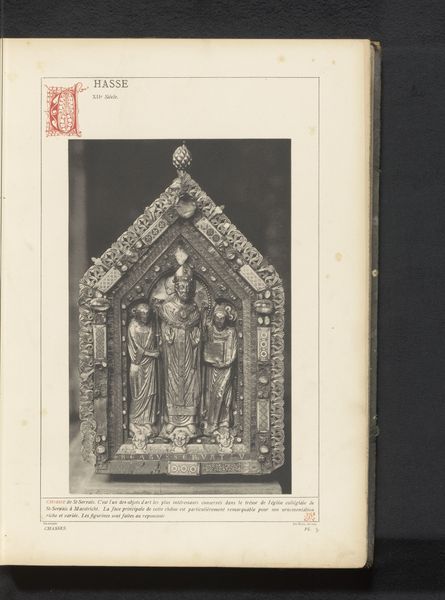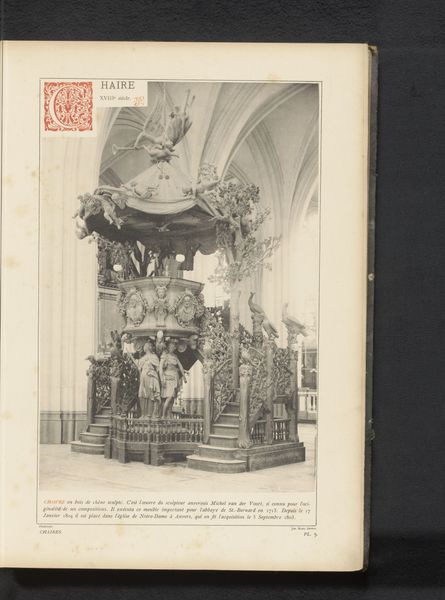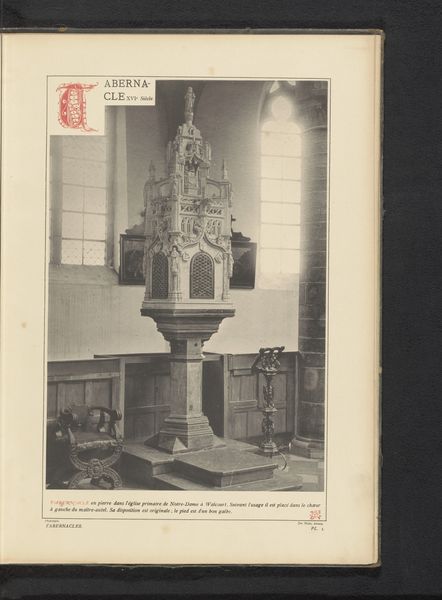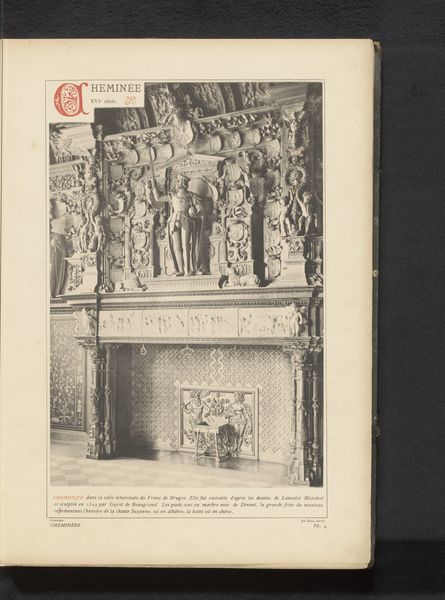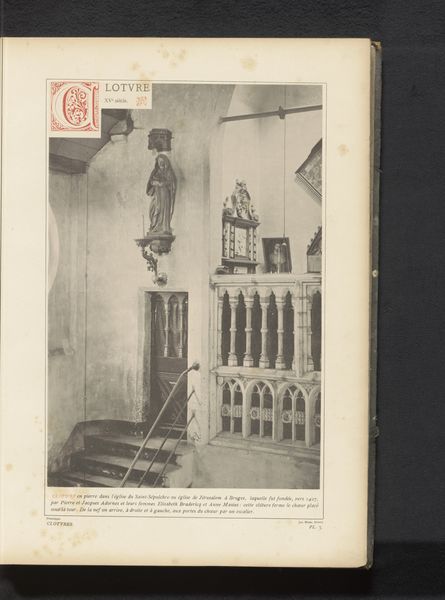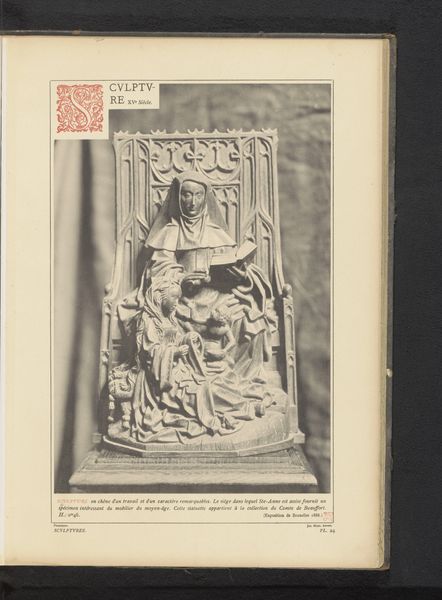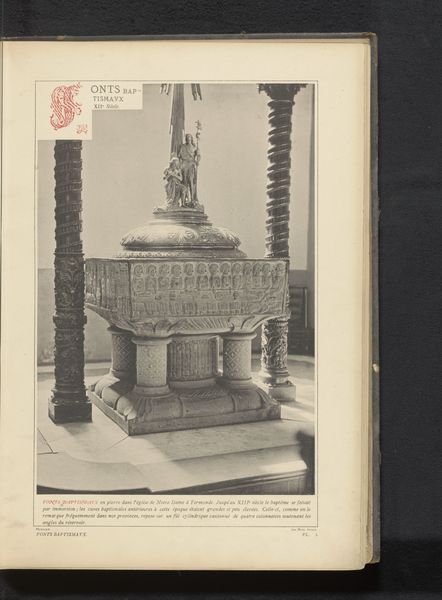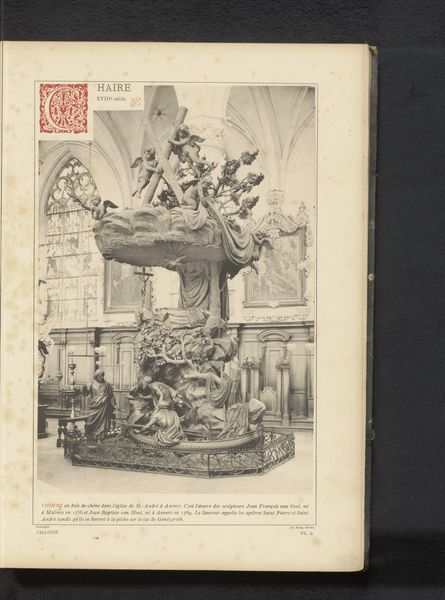
print, metal, photography, sculpture, gelatin-silver-print
#
portrait
#
medieval
# print
#
metal
#
figuration
#
photography
#
sculpture
#
gelatin-silver-print
#
history-painting
Dimensions: height 341 mm, width 234 mm
Copyright: Rijks Museum: Open Domain
Curator: This gelatin-silver print, taken before 1889, depicts the Reliquary of St. Maurus. It presents an intricate, miniature architectural form enclosing a seated figure. Editor: Immediately, I'm drawn to the layered effect, how the print captures light and texture. It's striking. I'm thinking about the meticulous craftsmanship—the physical labor and the collaborative process behind its original fabrication, not just its medieval function. Curator: Its function as a reliquary is critical; these objects were potent symbols of power and piety. Churches competed for the prestige of housing relics, significantly shaping the cultural landscape and artistic patronage. Editor: Absolutely, and look at how the materials – gold, enamel, jewels – broadcast wealth and authority, underscoring the Church's central role in controlling material production and ideological dissemination. Think about the guilds and workshops involved! Curator: And how this image allows for a kind of "historical possession," allowing the modern viewer a perspective unavailable in its original context. How do we reconcile the religious fervor such an object commanded with our modern, distanced gaze? Editor: That tension's essential. This image itself becomes a relic of sorts, recontextualized through photographic technology. Consider how this changes the object’s cultural and economic value through photographic reproduction and accessibility. The print mediates our understanding. Curator: Indeed, the act of photographic reproduction creates a new context and extends its historical trajectory into a new visual economy. I find it difficult to see beyond these later historical layers. Editor: I agree. And this late 19th-century rendition points to a revived interest in Medievalism, reflecting social ideals and aesthetic tastes of that era too. It is complexly layered with cultural intention across the ages. Curator: Examining its changing significance across different historical moments offers a richer understanding of not just religious devotion, but evolving artistic and social values. Editor: Ultimately, by appreciating the craftsmanship and the forces involved, we can deconstruct these items beyond religious objects into items shaped by socio-historical processes. A fascinating study of layers!
Comments
No comments
Be the first to comment and join the conversation on the ultimate creative platform.
